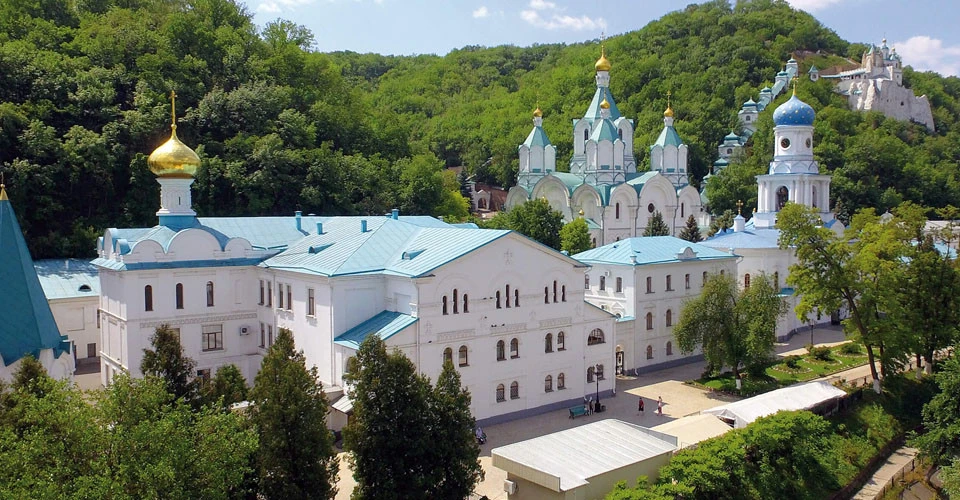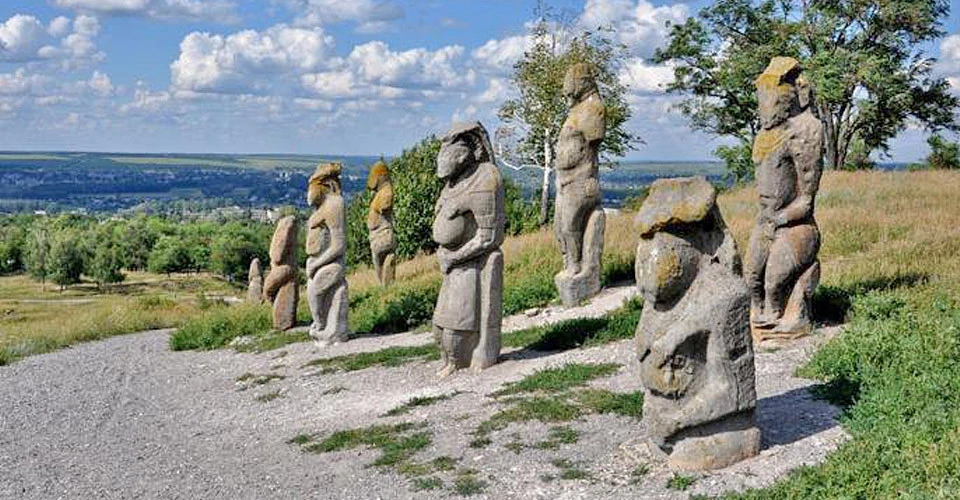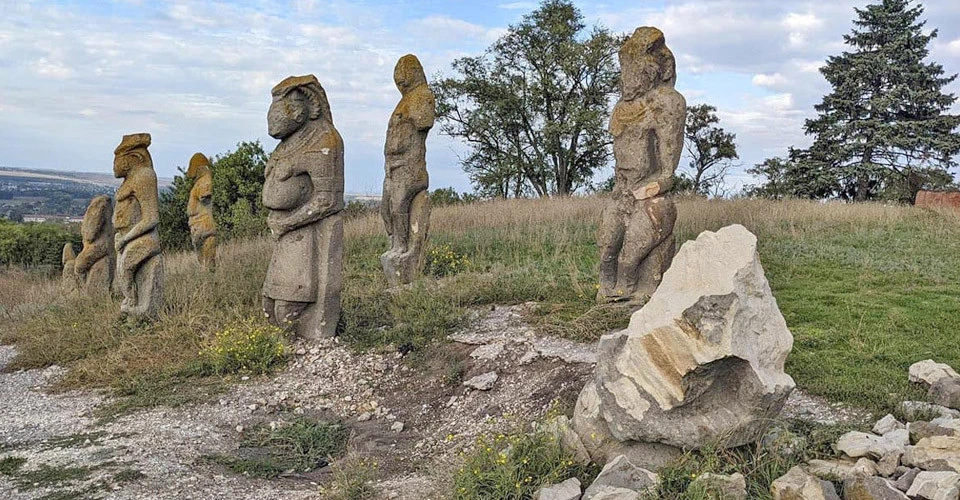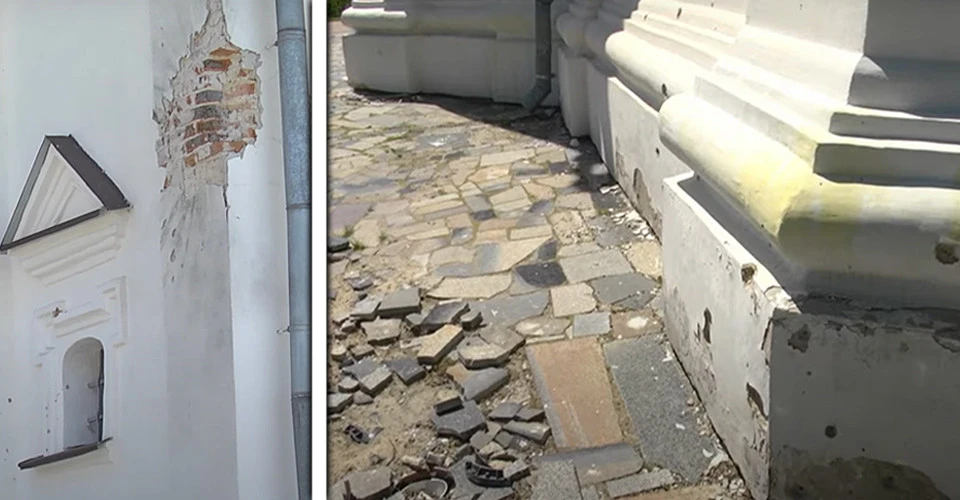
Russia destroys Ukraine's cultural heritage on scale unseen since World War II
The World Bank estimates that the cost of reconstruction and restoration of Ukrainian infrastructure will be at least $349bn, which is 1.5 times the size of Ukraine's pre-war economy
Since the beginning of the full-scale invasion, Russia has launched more than 10,000 missiles and drones against Ukraine. As a result, over 1,700 cultural infrastructure facilities and over 870 cultural heritage sites have been damaged or destroyed in the country.
Clubs, libraries, museums, theaters, philharmonic societies, art schools, colleges, as well as cultural heritage sites in 230 territorial communities have been damaged or destroyed. Most of them are in the Donetsk (87%), Sumy (51%), Luhansk, and Mykolaiv regions (42%).
At the same time, 37% of cultural heritage sites were damaged or destroyed in Kherson region, 36% in the Kharkiv, 33% in Zaporizhzhia, 29% in Kyiv, 18% in Dnipro, 16% in Chernihiv, 12% in Zhytomyr, 8% in Khmelnytsky, 6% in Odesa, 4% in Lviv, 3% in Vinnytsia, 3% in Cherkasy, and 2% in Zakarpattia regions.
Significant parts of the Luhansk, Kherson, Zaporizhzhia, and Donetsk regions are still occupied by Russia. This makes it impossible to calculate the exact number of cultural infrastructure objects damaged during the hostilities and occupation.
Espreso has made a selection of some of the most prominent cultural sites destroyed or damaged during Russia's war against Ukraine.
Sviatohirsk Cave Monastery
The Sviatohirsk Cave Monastery is one of the most famous Orthodox shrines in Ukraine, located on a mountain top in the town of Sviatohirsk, Donetsk region. However, during the Russian aggression, the monastery became one of the victims of the war.

In early June 2022, less than four months after the full-scale invasion, Russian troops approached Sviatohirsk and forced the Ukrainian army to retreat to the southern bank of the Siverskyi Donets River.
The retreating troops blew up the bridge across the river, and the monastery was trapped. While the fighting was going on, hundreds of refugees from Sviatohirsk and neighboring villages rushed to the monastery to hide from artillery fire and the threat of Russian occupation.
The premises and property of the Sviatohirsk Monastery have been heavily damaged during the active hostilities in the region.
According to the Ukrainian military, a Russian bomb hit the monastery on March 12, 2022. On May 4, Russian shelling damaged a dormitory, injuring at least seven people. On May 30 and June 1, 2022, artillery shelling killed three monks and one nun and wounded at least three other monks.
Several buildings adjacent to the monastery were also damaged or destroyed, including the wooden skythe church of All Saints, the largest wooden church in Ukraine.

Today, the Sviatohirsk Cave Monastery remains an important center of spirituality and culture not only for the local population but also for the whole of Ukraine, despite its numerous damages. It is a place where people find peace and tranquility, where important religious events and holidays take place.
However, it is unfortunate to recognize that Russia's full-scale invasion of Ukraine has done little to change the mood in Sviatohirsk Lavra, which is one of three Ukrainian monasteries used by the Ukrainian Orthodox Church of the Moscow Patriarchate. Its monks still mention Russia’s Patriarch Kirill during some of their services, despite his vocal support for Putin and the Russian invasion.
Nevertheless, the entire Ukrainian community supports the transfer of the monastery to the Orthodox Church of Ukraine, and the Donetsk regional authorities intend to revise the agreement with the Ukrainian Orthodox Church of the Moscow Patriarchate on the perpetual use of the Sviatohirsk Cave Monastery.
Polovtsian Babas
Polovtsian sculptures, popularly called "stone women," are tombstone statues of Polovtsians, monuments of sacred art of the 9th-13th centuries. They symbolized ancestors and were placed in specially built sanctuaries on the tops of high mounds or hills.

In Donbas, the number of Polovtsian Babas can approach 1000. Some of them bear certain ethnographic features and, accordingly, belong to a particular people. Since the beginning of Russia's full-scale invasion of Ukraine, they have become more revered in Donbas villages. People believe that they have always had a special significance, and today they come to them with requests for protection of both themselves and their loved ones.
These sculptures can also be found in the Kharkiv region. However, Russia's invasion of Ukraine puts their existence in jeopardy.
On Mount Kremenets near Izium, the invading Russian troops smashed a thousand-year-old stone Polovtsian woman. 8 of the 9 statues were preserved, and one was destroyed by a direct hit from a shell. And before that, in May 2022, a photo appeared online showing that the occupying Russian troops had attached the USSR flag to the sculptures.

The problem of preserving Polovtsian sculptures is acute now. The Russian invasion, like time, is destroying priceless monuments of the past. Therefore, it is necessary to take all measures to further preserve the Polovtsian culture, which embodies the customs, religious beliefs and unique art of a people that no longer exist and is an integral part of Ukraine's history.
Transfiguration Cathedral
The Transfiguration Cathedral is one of the oldest and most beautiful cathedrals of the Kyivan Rus period that has survived to this day in Chernihiv. The cathedral was founded by the first chronicled Chernihiv prince, Mstyslav Volodymyrovych, in the 1030s and became the main shrine and decoration of the Chernihiv-Siversk land.

However, it was not spared from Russian aggression. The southern wall of the cathedral was damaged by shrapnel from a Russian cluster shell during shelling on March 24-25, 2022. The car bridge over the Desna River towards Kyiv was destroyed, leaving only a pedestrian one. It was during the shelling of the pedestrian bridge that the architectural landmark came under the Russian occupiers' sights. Shell fragments damaged the plaster and smashed the windows.

The potholes in the Chernihiv cathedrals are yet another confirmation of the ignorance of Russians. However, no Russian crime against humanity will go unpunished.
Khortytsia
Khortytsia Island is the largest island on the Dnipro River, and its uniqueness lies in the rare combination of various natural complexes, geological, cultural and historical monuments on one territory. Its area is about 23.5 square kilometers, which is almost 10% of the territory of the modern city of Zaporizhzhia. In 1993, it was granted the status of a national reserve.

On April 21, 2022, Russian troops launched a missile attack on the protected island of Khortytsia for the first time. The missile hit in the area of the Preobrazhenskyi Bridge. At the time of the hit, an evacuation train was moving along the railway between Zaporizhzhia and Lviv. The blast wave smashed the windows of four cars and passenger cars that were moving across the bridge at the time.
Less than an hour later, the Russians launched a second attack on Khortytsia. The enemy fired a missile at the building of a health center there.
The next attack on Khortytsia took place a few weeks later. On May 12, a Russian missile hit the island's protected area. There were no casualties or injuries, but a large fire broke out. The fire covered about 500 square meters of the protected area.
Since then, almost 2 years after the start of the great war, the protected island in the Zaporizhzhia region, unfortunately, was not the last time the Russian army was in the crosshairs.

For example, on February 2, 2024, Russia bombed the Khortytsia reserve, damaging the Kamianska Sich cultural monument.
On top of that, the destruction of the Kakhovka HPP dam on June 6, 2023, led to the destruction of many ecosystems and the social sphere, which cannot be called anything other than ecocide.
Assumption Cathedral
The Assumption Cathedral is the oldest Orthodox church in Kharkiv and has great historical and artistic value. Kharkiv's residents erected the modern Baroque building in 1771-1777 on the site of the destroyed old church of the same name, which had existed since the mid-seventeenth century. The magnificent bell tower of the cathedral with twelve bells, which was built in the nineteenth century, is only ten meters lower than the bell tower of St. Mark's in Venice. Its height is 89.5 meters.

During World War II, the cathedral miraculously survived, although many buildings around it were destroyed. But 80 years later, Russian shelling damaged the cathedral's decoration, smashed windows, and destroyed stained-glass windows.

Although the war is a great tragedy for Ukraine and the world, the Ukrainian people have shown their endurance and courage in fighting the aggressor and rebuilding their country. This shows that the culture and spirituality of the people are the most important values that cannot be lost even in the most difficult times.
- News












































